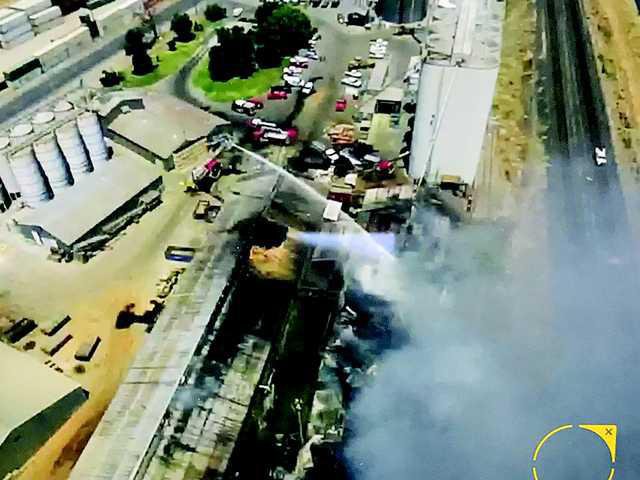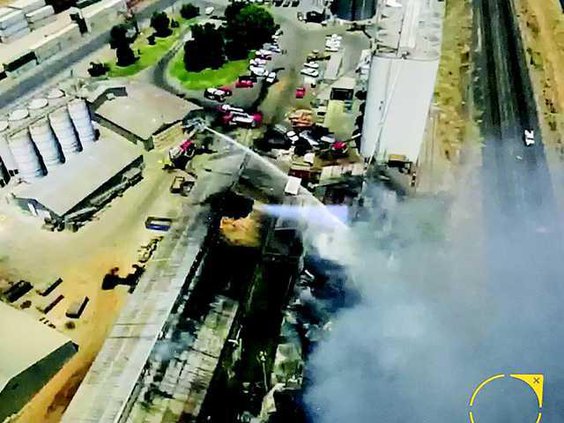A massive industrial blaze in French Camp Sunday morning – involving 1,500 gallons of crude corn oil and tons of grain – sent heavy black smoke into the air for hours that could be seen as far away as Oakdale some 40 miles to the east
French Camp Battalion Chief John Gish said he believed the fire broke out in the French Oils and French Camp Grain Co. complex some time before it was noticed and an alarm was sounded to multiple fire departments for their help. Seven water tankers responded to supply water for the fire in two 50-by -500-foot metal warehouses in the 9000 block of North Harlan Road.
Sheriff’s deputies and officers of the California Highway Patrol provided traffic control throughout the day.
Chief Gish said he had the tankers dump their loads of water into a large man-made 10-by-10 foot square resource pond that provides firefighters with continued water pressure.
Firefighters answered the French Camp mutual aid request from Lathrop-Manteca, Mountain House, Montezuma, Farmington, Woodbridge and Escalon departments among others.
Chief Gish said the fire was fueled by 52,000 tons of grain and three 500 gallon containers of crude corn oil. The two warehouses were located side by side with the majority of the fire in the easternmost warehouse and its twin igniting on the corner of the westerly building, he said.
Lathrop-Manteca brought its 100-foot-high ladder truck and fought the fire from above while water tankers pulled into the complex one by one – soon returning to the heart of Lathrop for another load.
French Camp Fire Captain Ryan Rose used the back of a chief’s vehicle to send his drone into the air checking on the extension of the fire noting a hot spot in the middle of the building to the west. He continually monitored the camera on his drone to keep track of the progression of the blaze.
Firefighters on the line were hampered by the 100-degree plus temperatures and replaced by incoming members of other departments to prevent heat stroke conditions.
AMR Ambulance medics set up under a tree and checked the condition of firefighters when they came off the line – some having been working for two to three hours. They were checking heart rates and blood pressures to ensure the conditions of the men. No one was inujured.
CORN OIL & GRAIN FIRE
7 fire agencies battle French Camp blaze





